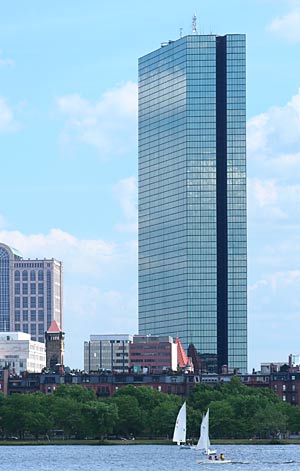Since it was planted in the landfill of Boston’s Back Bay district in the 1970s, I.M. Pei and Henry N. Cobb’s John Hancock Tower (1976) has been an emblem of spectacular but problematic commercial architecture. Excavation for the tower cracked the masonry of H.H. Richardson’s neighboring Trinity Church, faulty curtain walls rained glass onto surrounding streets, and the building swayed excessively.

Now, it’s a ready symbol of today’s vertiginous commercial real estate market. The building was sold in a foreclosure auction in late March to Normandy Real Estate Partners and Five Mile Capital Partners for a reported $660 million. The previous owners, Broadway Partners, paid $1.3 billion in 2006.
“The real question is why it sold for $1.3 billion when you couldn't see a tenant base to support it,” says MIT economics professor William Wheaton. “It's a sign of the folly that partly got us into the financial crisis."
Nationwide, the easy money of recent years allowed investors to overpay, and when their loans came due, many came up short and were forced to sell into an illiquid market, according to Wheaton. The Hancock's radically lower auction price reflects where rents are likely to be over the next five years, he says.
Along with the overall recession, the financial industry’s shrinkage and its dispersal from expensive city centers significantly dents the market for major new towers, says Wheaton. To build the Hancock today, construction alone would probably top $660 million, he notes. “It may be that buildings like that are endangered species, if the tenant base isn't there to pay 100-buck [per square foot] rents,” he says.
At the end of the first quarter, asking prices for prime office space in Boston's financial district and Back Bay were in the $50 to $65 per square foot range, down at least 10 percent from a year ago, according to commercial real estate services company Colliers Meredith & Grew. Across the country, vacancies were up and demand for downtown office space was off significantly in the fourth quarter of 2008.




Post a comment to this article
Report Abusive Comment